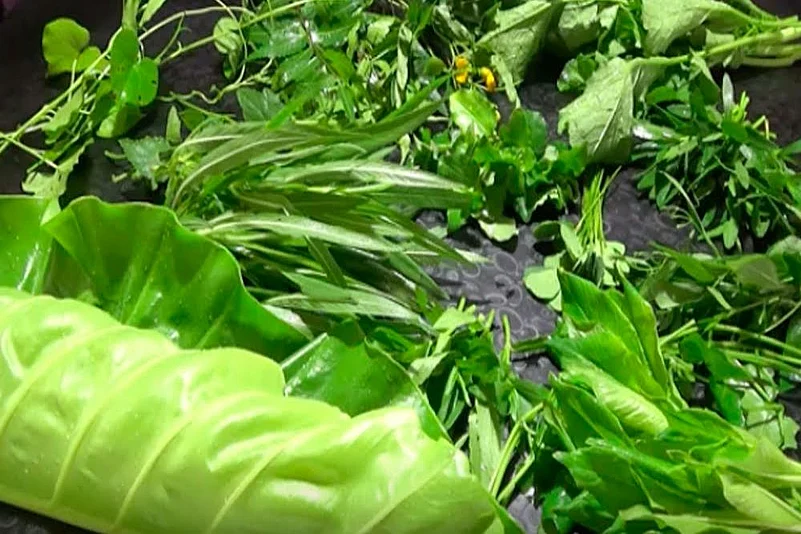Fourteen nights from Durga puja, as the moon reveals its dark side, 14 generations of your forebears come down to visit you. So goes the saying. Tonight is the night of the dead—“bhoot chaturdashi”—a time to bring closure to the past and begin afresh with the new moon of Deepavali.
Choddo Shak Day
It’s a day to worship and thank your ancestors for their benevolence. Fourteen lamps are lit in all dark corners of the home, to guide your ancestors in. Fourteen types of foliage, “choddo shaak” are soaked in water, to be sprinkled all around, to ward off the unsatiated souls that also stalk the earth at this time. The greens are fried in mustard oil and consumed, to spread positive energy. All that fear and insecurity culminate in the worship of Kali, the destroyer of evil, a day later.
Advertisement
Protective plants
To anthropologists, however, religious traditions often hide community best-practices. The tradition of consuming “choddo shak" on bhoot chaturdashi is one such ritual. It probably developed to collectively fight infectious disease outbreaks that occur post-monsoon and in winter, to boost community resistance and wellbeing. According to Charaka Samhita, the ayurvedic compendium of second century BC, we must eat edible green herbs and weeds in the month of Kartika, because all the doors leading to the house of the god of death, Yama, open now. To anthropologists, however, it’s a festival to refuel strength and health. An ancient custom, that finds mention for the first time in 16th century by Sanskrit scholar of the Bengal region, Raghunandan Bhattacharya. Was it prevalent all over India? No one knows, although it continues unabated in eastern India, especially Bengal.
Advertisement
Medicinal agents
Not surprisingly, all the 14 plants of “choddo shak” have always been used for medicinal purposes. Researchers from the Bengal Institute of Pharmaceutical Sciences (BIPS). Kalyani, have analysed (International Ayurvedic Medical Journal , 2017) the type of ailments against which the 14 greens have always been used in traditional medicine: seasonal upper respiratory tract infection, namely allergic rhinitis, seasonal cough and cold, allergic bronchitis, asthma and fever; gastrointestinal problems, especially allergies, liver and spleen disorders and against piles; seasonal affective disorders, a type of depression with a seasonal pattern; seasonal skin rashes and infections. Some of these plants have traditionally been used against malaria, chronic fever, pain and insect bites.
At a molecular level
Pharmacological research reveal the primary hallmark of these plants: antihistamine activity—when a medicine reduces or blocks histamines, thereby stop allergy symptoms; antimicrobial activity—both antibacterial and anti-fungal; hepatoprotective activity—or protecting the liver cells; anthelmintic activity, or either killing or expelling infesting worm-like parasites that often live in the gastrointestinal tract; psychopharmacological activity, which impact behaviour and mood, relax muscles and induce sleep; immuno-modulatory activity, especially increasing the immune responsiveness of the body against pathogens; anticonvulsant activity, by suppressing excessive rapid-firing of brain neurones during seizures; anxiolytic activity—inhibit anxiety and stress.
Here’s a list of “choddo shak," their biological names and how they protect your body. A case of fighting diseases during seasonal transition, all in the name of religion.
Advertisement





















